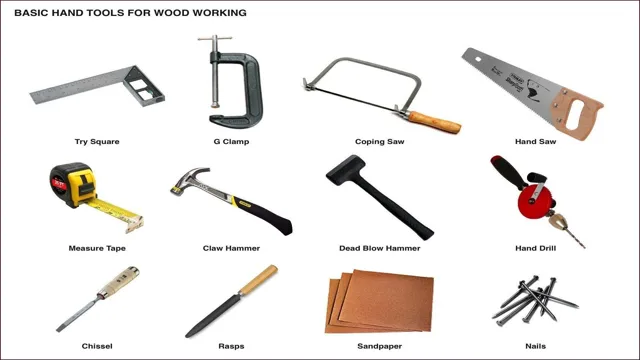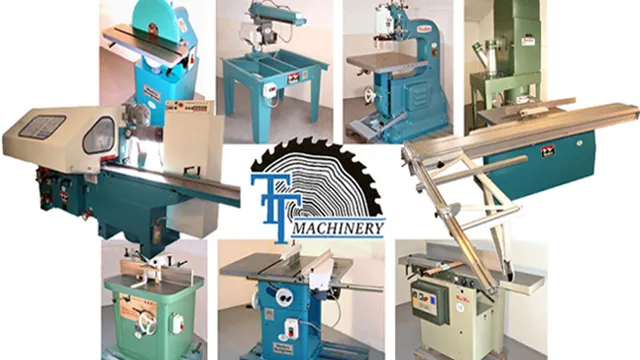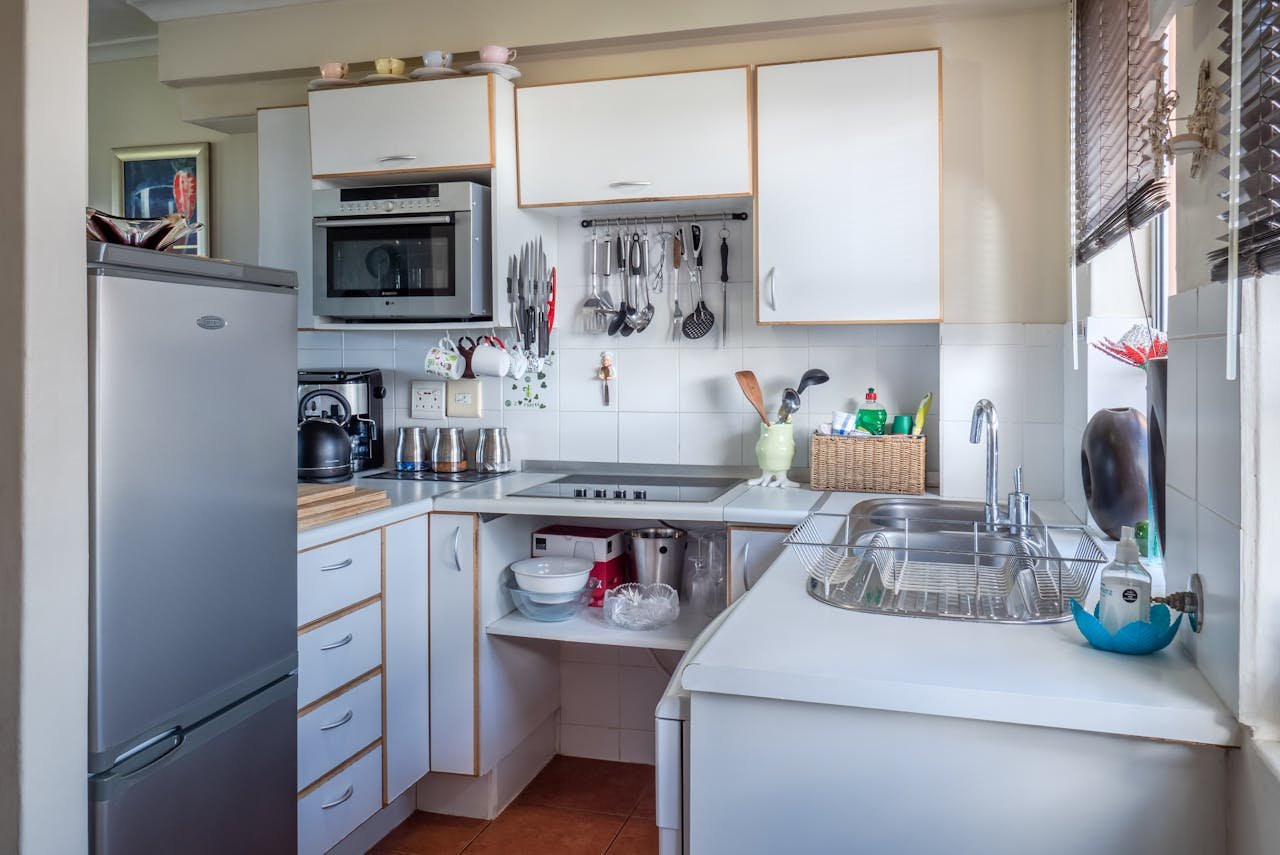How to Price Used Woodworking Equipment: A Comprehensive Guide for Sellers

If you’re looking to sell your used woodworking equipment, you may be wondering how to price it to attract potential buyers and make a profit. Pricing can be a daunting task, but fear not, we’re here to help. The key is to find a balance between getting the most money possible and ensuring a fair price for the buyer.
It’s important to consider factors such as age, condition, and brand when determining the price of your equipment. While a brand new machine may hold its value well, you can’t expect the same price for an older one that’s been used extensively. Additionally, if your equipment has any wear and tear, you may need to adjust the price accordingly.
A good rule of thumb is to research the market and see what similar equipment is going for. This will help you determine a fair price that won’t scare away potential buyers. You may also want to consider the cost of shipping or delivery, as this can add to the overall expense for the buyer.
Remember, pricing is not set in stone, and it’s okay to negotiate with potential buyers. Be willing to adjust your price if necessary to reach a mutually beneficial agreement. In the end, finding the right price for your used woodworking equipment can take time and effort, but it’s worth it when you’re able to sell it and make a profit.
Understanding the Market
If you’re looking to sell your used woodworking equipment and are wondering how to price it, it’s important to understand the market and the factors that affect the value of used equipment. One of the key factors is the age and condition of the equipment. Older equipment may have lower resale value, especially if it’s in poor condition, whereas newer equipment in good condition may command a higher price.
Another important factor is the brand name and reputation of the manufacturer. More established and well-known brands may be easier to sell at a higher price, as buyers may trust in their quality and reliability. Additionally, supply and demand play a role in pricing, as popular equipment that’s in high demand may fetch a higher price.
Researching recent sales of similar equipment can also help guide your pricing strategy. By taking these factors into consideration, you can effectively price your used woodworking equipment to maximize its resale value.
Research local and online markets for similar items sold
When trying to sell items, it’s essential to understand the market you’re selling in. Researching local and online markets for similar items can help you determine pricing, demand, and competition. It’s not enough to simply know what you’re selling; you need to understand the market you’re selling in to make informed decisions.
For example, if you’re selling vintage clothing, you’ll want to research the demand for vintage clothing in your local area and online. You’ll also want to investigate the prices that other sellers are offering for similar clothing items. Understanding the market will help you set a competitive price and determine where to sell your items.
Plus, you’ll be able to identify gaps in the market that present unique opportunities for your items. By researching the market, you’ll be able to make informed decisions and increase your chances of success when selling your items.

Consider the condition of your equipment
When it comes to understanding the market, one essential aspect to consider is the condition of your equipment. It’s not enough to simply have the latest and greatest gear if it’s not in good working order. If your equipment is outdated, slow, or unable to perform necessary tasks, it can negatively impact your business.
Understanding the market means analyzing what your competitors are using and what your customers are demanding. Investing in upgrades or replacements can be costly, but it’s essential for remaining competitive and meeting customer needs. In short, keeping your equipment in top condition is essential for staying ahead in a fast-paced and constantly evolving marketplace.
Determine a Base Price
When pricing used woodworking equipment, determining a base price is crucial. Firstly, evaluate the brand and reputation of the equipment. Higher-end, reputable brands may command a higher price than lesser-known brands.
Next, consider the age and condition of the equipment. The newer and more well-maintained the equipment, the higher the price can be set. Additionally, take a look at the current market demand for the specific type of equipment.
If there is a high demand, the price can be set higher. On the other hand, if there is a surplus of similar equipment on the market, the price may need to be lowered to attract buyers. It’s important to also factor in any additional extras that come with the equipment, such as manuals, tools, or attachments.
By considering all of these factors, you can determine a fair and competitive base price for your used woodworking equipment.
Use original price and age to adjust for depreciation
When purchasing a used item, it is important to determine its base price. This involves using the original price and the age of the item to adjust for depreciation. For example, a car that was purchased for $20,000 five years ago will not be worth the same amount today.
The value decreases over time due to wear and tear, as well as newer models being released. By determining the base price, buyers can negotiate a fair price with the seller. It is important to do thorough research and compare prices of similar items to ensure that the proposed price is reasonable.
Keep in mind that the base price is just the starting point for negotiations and other factors, such as the condition of the item, should also be considered. Utilizing these tactics can help buyers save money and avoid overpaying for used items.
Consider demand for similar products and competition
When determining a base price for your product, it’s crucial to consider the demand for similar products and the level of competition in your market. Analyzing your competitors’ pricing strategies can provide valuable insights into the optimal price range for your own product. Additionally, it’s essential to remember that pricing is not a one-time decision but requires ongoing monitoring and adjustment.
As your product gains popularity and the market evolves, you may need to reevaluate your pricing strategy to ensure that your prices remain competitive and aligned with your target customers’ expectations. Remember, your pricing strategy should never be set in stone, and staying flexible can help you stay ahead of your competitors in the long run. Ultimately, setting a base price for your product requires careful consideration and constant attention to stay relevant and competitive in today’s fast-paced market.
Factor in Extra Costs
When pricing used woodworking equipment, it’s important to factor in extra costs beyond just the initial purchase price. For example, you may need to factor in the cost of transporting the equipment to your location, any necessary repairs or upgrades, and ongoing maintenance expenses. Additionally, it’s a good idea to budget for unexpected costs that may arise, such as emergency repairs or replacement parts.
By taking the time to carefully consider these factors, you can set a fair and realistic price for your used woodworking equipment that takes into account all of the associated costs. This will help ensure that you receive a fair price for your equipment while also providing buyers with a clear understanding of the total cost of ownership. So, when pricing used woodworking equipment, remember to factor in all of the extra costs to make sure you get the best price possible.
Adjust for wear and tear on equipment
When it comes to running a business, it’s important to take into consideration all the costs that may arise. One factor that tends to be overlooked is the wear and tear on equipment. As time goes by, your machines and tools will experience wear and tear, which may result in the need for repairs or replacements.
Therefore, it’s important to factor in these extra costs into your budget, so you’re prepared when the time comes. By accounting for equipment wear and tear, you’ll have a clear understanding of how much you need to set aside for future repairs or replacements, ensuring your business runs smoothly without any unexpected costs. So, if you haven’t already, make sure to factor in these costs to avoid any surprises down the road.
Factor in shipping and delivery costs, if applicable
When you’re shopping online or ordering goods from a company, it’s essential to factor in extra costs that may come up, such as shipping and delivery fees. These costs can vary depending on your location, the weight or size of the item, and the shipping speed you choose. It’s important to keep in mind that these charges can add up quickly, especially if you’re ordering multiple items or buying from a retailer overseas.
To avoid any unpleasant surprises, it’s wise to familiarize yourself with the seller’s shipping policies before making a purchase. Some may offer free shipping for orders over a certain amount, while others may charge a flat fee or calculate the cost based on the item’s weight and destination. By doing your research and being mindful of these extra expenses, you can ensure that you’re not overspending and getting the best possible deal.
Closing the Deal
When it comes to pricing used woodworking equipment, it can be a tough task to determine the right amount. One important aspect to consider is the age of the equipment. If the equipment is relatively old, it may not be worth as much as newer models.
Another factor to consider is the condition of the equipment. If it has been heavily used and has visible wear and tear, it may not be worth as much as one in brand new condition. Additionally, it is vital to research the market value of similar or identical equipment to gain an accurate understanding of the pricing.
Remember to be flexible when negotiating the final price with potential buyers, taking into account factors such as demand and the buyer’s budget. By factoring in these variables, you can determine a fair price for your used woodworking equipment that is both profitable for you and appealing to prospective buyers.
Be open to negotiation based on buyer’s needs and limitations
When it comes to closing a deal, one important factor to consider is being open to negotiation based on the buyer’s needs and limitations. It’s essential to understand that every buyer is unique, and what may work for one may not work for another. Therefore, it’s crucial to listen to their concerns carefully and offer possible solutions that cater to their situation.
Remember, successful deals are built on compromise and finding common ground. By being flexible and accommodating, you establish a rapport with the buyer, making it easier to arrive at an agreement that works for both parties. The keyword here is negotiation – it’s an art that requires patience, effective communication, and a willingness to listen.
By mastering the art of negotiation, you can close more deals and build lasting relationships with your customers.
Set a minimum price and understand when to walk away
Closing a deal can be a tricky business, particularly if you’re negotiating a price that’s below what you’re willing to accept. In these situations, it’s essential to set a minimum price and understand when to walk away. This means being clear about the lowest price you’re willing to accept and being prepared to say no if the other party can’t meet that figure.
It’s important to remember that walking away from a deal is not a failure; it’s simply a reflection of the fact that the terms on offer are not acceptable. By setting a clear minimum price and being prepared to walk away, you’re showing the other party that you’re serious about your valuation and that you’re not willing to compromise on a figure that’s lower than what you believe your product or service is worth. Ultimately, this approach can be highly effective in securing favorable terms and closing a deal that’s right for you and your business.
Conclusion
In conclusion, pricing used woodworking equipment requires more than just a simple calculation of cost and depreciation. It requires a keen understanding of the market, product demand, and the condition of the equipment. Like any skillful woodworker, one must work diligently to hone their pricing strategy, fine-tuning it as needed to achieve a balance between profit and customer satisfaction.
The key takeaway? When it comes to pricing used woodworking equipment, choose your tools wisely and measure twice, price once!”
FAQs
What factors should I consider when pricing used woodworking equipment?
Some factors to consider when pricing used woodworking equipment include the brand and model, the condition of the equipment, any included accessories or tools, and current market demand.
How can I determine the fair market value for my used woodworking equipment?
Researching recent sales prices for similar equipment, consulting with industry experts, and using online valuation tools can help you determine the fair market value for your used woodworking equipment.
Should I consider offering financing or payment plans when selling used woodworking equipment?
Offering financing or payment plans may increase the potential buyer pool for your used woodworking equipment, but it also carries some financial risk and administrative overhead. Consider the pros and cons before making a decision.
Is it better to sell my used woodworking equipment through a dealer or privately?
Selling through a dealer may provide more exposure and assurance for buyers, but it also typically comes with a higher commission or consignment fee. Selling privately may require more effort and marketing, but can result in a higher profit margin.
What steps should I take to prepare my used woodworking equipment for sale?
Clean and verify the condition of all parts and accessories, take high-quality photos, write clear descriptions and specifications, and consider any necessary repairs or maintenance before listing your used woodworking equipment for sale.
How can I protect myself from fraud when selling used woodworking equipment?
Use caution when dealing with buyers who offer to pay significantly more than your asking price or who request unusual payment methods or shipping arrangements. Verify payment and shipping information before completing the transaction.
What are some common mistakes to avoid when pricing and selling used woodworking equipment?
Some common mistakes include overpricing or underpricing, failing to accurately represent the condition or features of the equipment, and neglecting to research the current market demand and competition.



